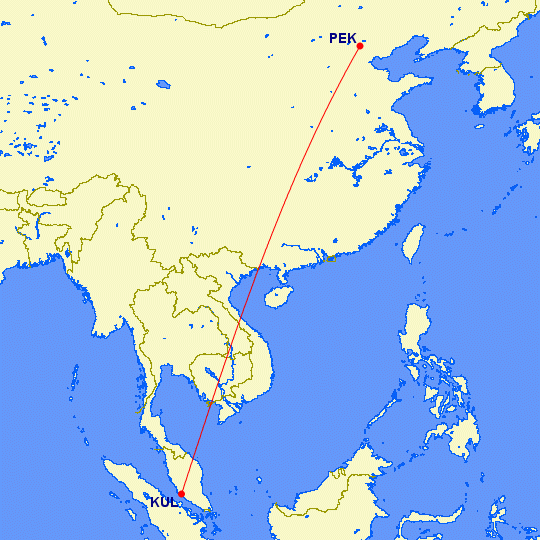Search Updates For Missing Malaysia MH370 Flight: China, Taiwan, US, Singapore, Philippines, Australia And Others Send Help

More than two days after an ill-fated, Beijing-bound Malaysian Airlines flight from Kuala Lumpur went missing, not much progress has been made locating it. As more speculation and mysterious details arise, there has been only one new development: an outpouring of support from Southeast Asian governments that usually have frosty relationships with each other.
Government involvement in helping find flight MH370 is the most recent and significant sign of regional cooperation. Many of these nations' various territorial and maritime disputes among several Asian countries in the South China Sea were placed on hold for during the search. Ships from Vietnam, China, Singapore, Indonesia, Thailand, the Philippines and Australia have been been dispatched to search for the missing plane and its 227 passengers and 12 crew members.
Here’s a breakdown of who is doing what to support the search for MH370:
Vietnam: Vietnam was the first country to begin searching for signs of the missing airplane, deploying four aircraft and seven maritime vessels to search between Malaysia and the southern region of Vietnam. Vietnamese military planes initially reported oil slicks that some thought were connected to the missing flight, but authorities later determined they were not related to the missing jet.
China: Almost two-thirds of the passengers on the Beijing-bound flight were Chinese citizens, and if confirmed, that would be the second-worst air disaster for the nation in terms of the number of Chinese citizens involved. With many of the families anxiously waiting in Beijing for any updates or news, China’s military has offered the search effort two warships, three coast guard boats and multiple civilian vessels to aid with search and rescue operations.
The U.S.: The United States dispatched a team from the National Transportation Safety Board to help with the investigation of the missing plane, while the guided-missile destroyers USS Pinckney and USS Kidd, both currently deployed in the region, were sent to help the search and rescue efforts. Both vessels are equipped with Seahawk helicopters that are specially designed for search and rescue, among other things. The U.S. Navy also contributed a P-3C Orion maritime patrol aircraft flying from Malaysia.
Singapore: The ministry of defense released three C-130 aircraft from its air force as well as a naval helicopter, and is also offering up submarine support as well as a rescue vessel with divers.
Australia: Australia offered two planes to help locate the missing Malaysian flight. The Chief of the Australian Defense Force confirmed that one of the AP-3C Orions, a local variant of the plane deployed by the U.S. Navy, departed from Australia on Sunday evening, with the second of the two dispatched on Monday morning. The two aircraft are reportedly used for long-range surveillance and are equipped with a range of sensors, making them well-suited for search operations.
Indonesia: Indonesia sent five ships on Sunday to help Malaysian authorities expand the search radius, in an area called the Malacca Strait.
Thailand: The stolen passports used by at least two people to board the airplane were reported stolen in Thailand. Thai authorities have been investigating the situation. The passports were stolen on the resort island of Phuket.
Philippines: The Philippines sent three navy patrol boats and a surveillance plane to the South China Sea over the weekend, and it was one of four initial countries to help with search efforts.
Taiwan: A Taiwanese military frigate and military plane were dispatched on Monday to patrol waters between Malaysia and Vietnam, Taiwan’s Ministry of National Defense announced.
© Copyright IBTimes 2024. All rights reserved.






















